From the SWISS BULLETIN: The last packer of Zermatt Belvedere
Please enjoy this article from our friend, Josefine at the SWISS BULLETIN. Mules have made their mark helping people with their tasks all around the world and their stories are nothing short of amazing! Loving Longears is something special that we all have in common despite our different languages. Read it, below:
The last packer of Zermatt Belvedere
Mules in the service of transport and travel in ancient times
By Alban Lorenz
The Valais lies in the southwest of Switzerland and is our little California. This canton is known for much sun, little rain, high mountains, good wine, sweet fruits and many tourisms. The main valley with the river Rhône, which flows into the Mediterranean, has many side valleys. A great number of mountain villages there were still without roads until the middle of the 20th century. The inhabitants had to transport everything by their own or they used pack animals (oxen or mules). Therefore, the Valais was the region in Switzerland that had the most mules until the 1960s.
Me, Alban Lorenz (*1939) and my brother Elias (*1932) grew up in Törbel, a mountain village high above the Matter Valley. At this time there were still 40 mules living in Törbel, before motorization also arrived there in the middle of the 20th century. The last mule in Törbel, Apollo, died in spring 2010, shortly before his master Bruno Hosennen. Bruno’s girlfriend, the artist Helen Güdel, has illustrated and published a children’s book about Apollo and Bruno.
After my apprenticeship, I moved to Zurich, Switzerland’s largest city, where I worked for the police until my retirement. Elias remained in his homeland and worked as a packer for many years. My family had his own mule. Some poorer families had to share a mule.
During the summer season some mules from Törbel were employed for transports up to mountain huts and hotels. The Hotel Belvedere in Zermatt is located high above the village at the foot of the Matterhorn, Switzerland’s most famous mountain. From the very beginning, all material, drinks and food for the hotel had to been transported up there by mules. The stable for the animals was near Lake Black (Schwarzsee), right next to the cable car station, that led up from the village Zermatt.So the mules could be packed right next to the station and led up to the hotel.
Goods had to be transported every day in all weathers, and the climb took three hours. The track was well worked out and led through steep rocky terrain to the hotel.Thewaste and empties of the hotel had to be transported on the same route back to the cable car station.
Mid 50s, early 60s, Elias worked some summers there as a packer with two mules on contract for the municipality of Zermatt. The mules he worked with were his own and a rented one. I had to replace him once for two days in the summer of 1963 and was able to make my own experiences.
There were times when Elias managed the transports only with his mule Belli. So it happened that one autumn day an early onset of winter arrived. The snowfall was so heavy that a walk back to Zermatt with the mule was impossible. However, the cable car could still run. This made it possible to load the mule into the cabin and drive Belli and Elias down to Zermatt, where the cable cabin and its contents arrived without any damage.
With Belli, Elias was also active as a packer for various other transports. When the Dom Hut of the Swiss Alpine Club was constructed high above the village Randa, mules were also used. During the construction of the earlier Monte Rosa Hut, the building material had to be transported by mules from the Gornergratrailway station over the glacier to the construction site. Belli had no trouble crossing the ice.
In Saas Grund was a transport company that often received larger transport orders. Therefore, the boss had to rent additional mules with their packers in addition to his own animals. Elias and his Belli were also mostly involved.
Unfortunately, Elias couldn’t avoid unpleasant transports. Among those were dead people who were fatally injured on the mountain. Once he had to bring down the body of his best friend on a mule, who had worked as a hut keeper in the Hörnli Hut.
One autumn day I was at home in Törbel, when my brother came home from Zermatt with the mules after a long time. By chance, I looked out the window of my parents’ house and saw Belli coming up the path. When the mule saw the house, she brayed loudly and ran the last part of the way to her place in front of the stable. This observation showed me that even a mule can be happy to finally come home after a long absence.
Photos of the Lorenz Family
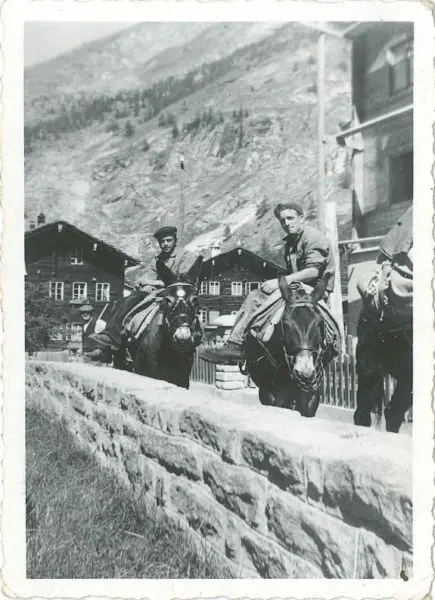
In Saas Grund, in the background packer Edelbert Juon
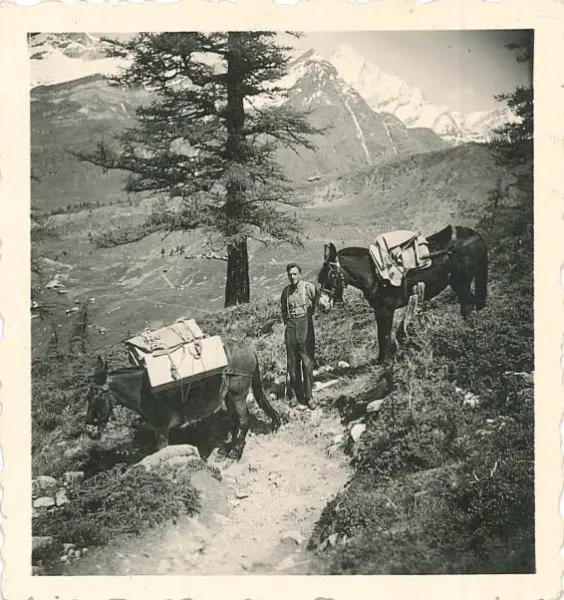
Elias Lorenz with two mules on the way to the Hotel Belvedere
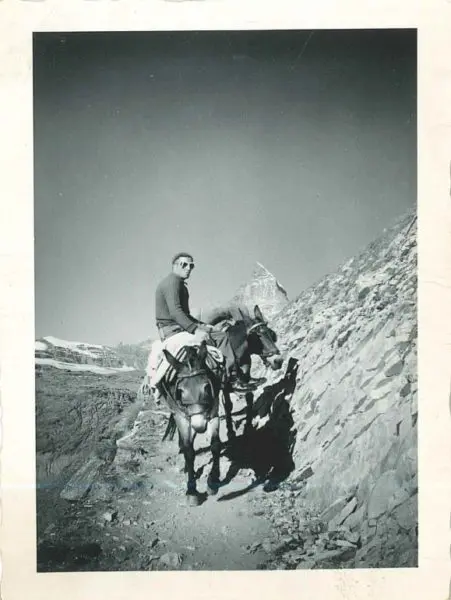
Elias Lorenz with 2 mules on the descent from Hotel Belvedere
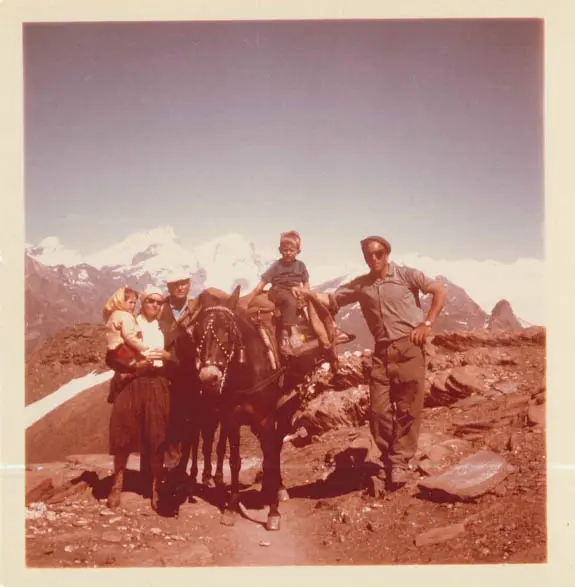
Mule Belli with tourists in Zermatt
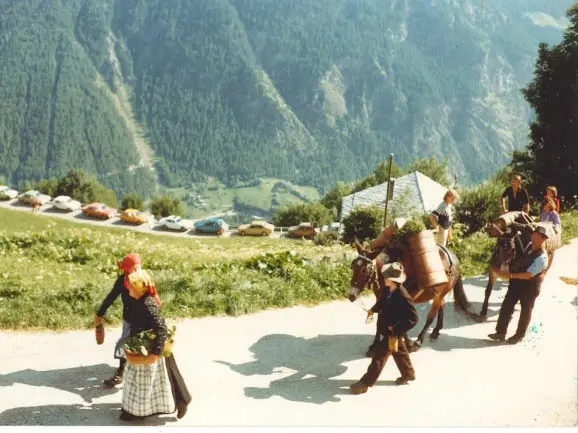
Parade in Törbel during a village festival in the 70s
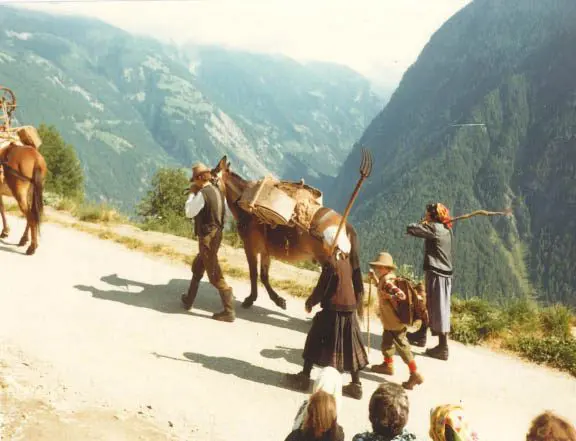
Parade in Törbel during a village festival in the 70s
Additional photos from the internet
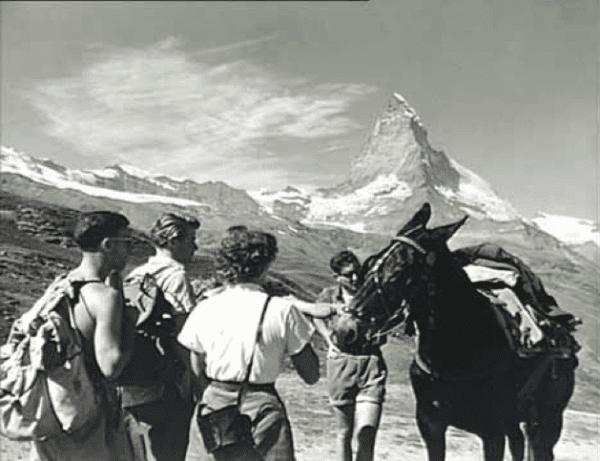
Riffelberg walk and view on the Matterhorn ca.1950
Photo: Fernand Perret, www.mediatheque.ch
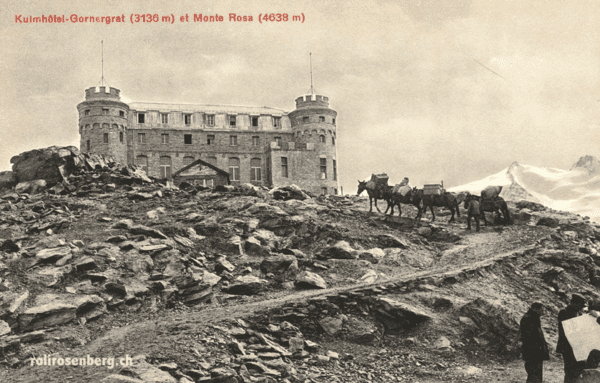
Hotel Gornergrat with packmules
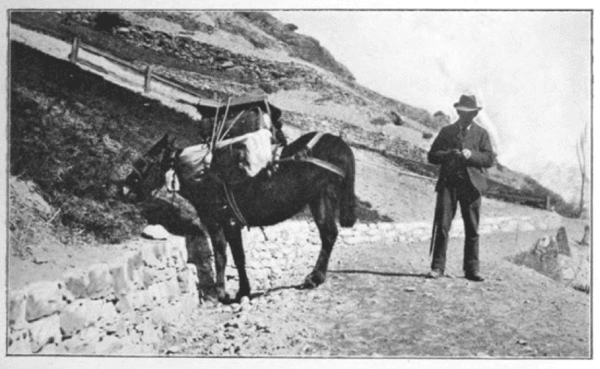
Going leisurely to Zermatt with a Mule for the luggage in the olden days.
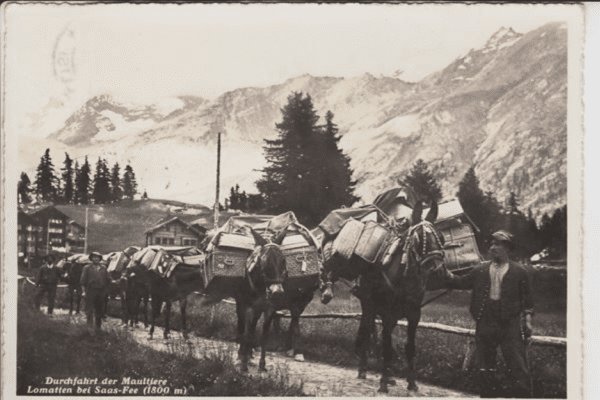
Passage of the mules, Lomatten near Saas-Fee (1800m) 1972. The man in front, Christian Lorenz, is the father of Alban and Elias. He worked also as packer.

